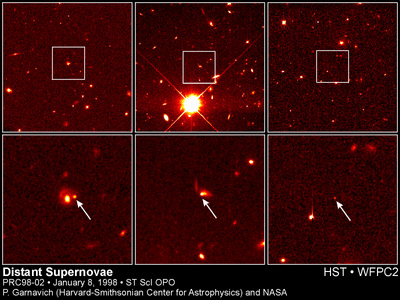Astronomers hypothesize that an enigmatic, darker force that is ejecting galaxies is what is speeding up the expansion pace. One theory says that dark energy might be a property of space. Albert Einstein was the first to understand that nothing exists in a vacuum.
What is Dark energy actually?
Dark energy is a fictitious type of energy that acts as the antithesis of gravity by exerting a repellent, negative force. The observational features of distant type Ia supernova, which disclose the cosmos spreading more quickly than normal, have been postulated to explain them. Deduced from measurements of gravitational interactions between celestial objects, Dark Energy is not explicitly detected, like Dark matter.
The mass-energy density of the universe is 72% conjured up of dark energy. Dark Matter is the other major factor, and just a minor proportion comes from atoms or baryonicmatter.

It was revealed in 1998 by two astronomy teams that far-off; z1 type Ia supernovae were a little bit dimmer than indicated by models of an extending cosmos. The supernovae must be more away in order to be dimmer, and farther distant means that the rate of expansion must have been less in the former. The universe is experiencing an accelerating expansion period, based on both teams. To make this acceleration possible, dark energy was used. Albert Einstein had mentioned a “cosmological constant” in the early 20th century; it is typically represented by the Greek letter lambda, or. The universe, as anticipated by his field equations of the theory of General Theory of Relativity, was retained stationary rather than shrinking or spreading by a vacuum energy of empty space. It offered a solution for reversing the gravitational confinement brought on by matter. When it was discovered that the universe is expanding, Einstein immediately abandoned his cosmological constant. Conversely, if dark energy is analogous to Einstein’s cosmological constant, it exerts negative pressure on the universe’s extension rather than just offsetting gravity to hold it stationary.
A cosmic field linked to wage growth and a distinct, low-energy entity known as “quintessence” have both been hypothesized as additional forms of dark energy. Inflation is the term for the time of rapid expansion that is believed to have occurred in the very early universe. The cosmos was smoothed out and turned geometrically round by inflation, which took place roughly 10-36 seconds after the big bang. The universe’s shape would be flat like a sheet of paper if its density perfectly matched the critical behavior. The crucial density (about 6 protons per m3) for a universe where matter predominates lies exactly halfway between that needed for a universe that is heavy and will inevitably collapse and one that is light and will continue to expand indefinitely. Astronomers can only detect roughly 30% of the matter and energy required to make the cosmos flat when evaluating the universe’s current quantity of matter and energy. The universe becomes plane when Dark Energy is factored into the mass-energy equation. According to the most basic interpretation of inflation, the universe’s density is really very near to the critical density.
The topology of the cosmos has been determined by WMAP. The biggest changes in the cosmic microwave background (also known as “spots”), if the universe were flat, would measure around 1 degree in diameter. This spot size has been very precisely validated by WMAP. With a mere 2% inaccuracy, we now have proof that the universe is flat.

The word “quintessence” comes from the Greeks of antiquity, who used it to refer to a mystery “fifth element” in contrast to air, earth, fire, and water. Unlike quintessence, which is dynamic, time-evolving, and regionally dependent, the cosmological constant is a particular type of energy, a vacuum energy. Kinetic and potential energy are present in the quantum field. Quintessence has the ability to attract or repel depending on how the two energies interact and how much pressure they apply. Its equation of state, which connects its pressure (p) and density (ρ), is given by the formula p = wρ, where w is the equation of state for the energy that governs the universe.. Accelerated growth starts when w changes from greater than -1/3 to less than that. The energy density of a cosmological constant, on the other hand, is fixed, and w = 1. Numerous current initiatives exist with the goal of learning more about dark energy. Baryonic acoustic oscillations are recorded in one such study.
There have been suggestions for Dark Energy substitutes. Our galaxy may be located inside an area of low density brought on by the transit of a density wave, according to some astronomers. This gigantic wave in space-time might have been produced by the Big Bang. The Galaxy is currently located in a low-density groove that this fundamental wave left behind as it travelled across the cosmos. This ripple is several tens of millions of light-years large. Although theoretically plausible, any variation in space-characteristics times would go against the Copernican principle, which claims that the cosmos is identical on the macroscale.

Muhammad Taimur Khan
M. Taimur Khan did BS(HONS) in physics and MS in Astronomy & Astrophysics. His research interest evolved around detection of solar storms and their influence on GNSS and GPS systems.
Really informative